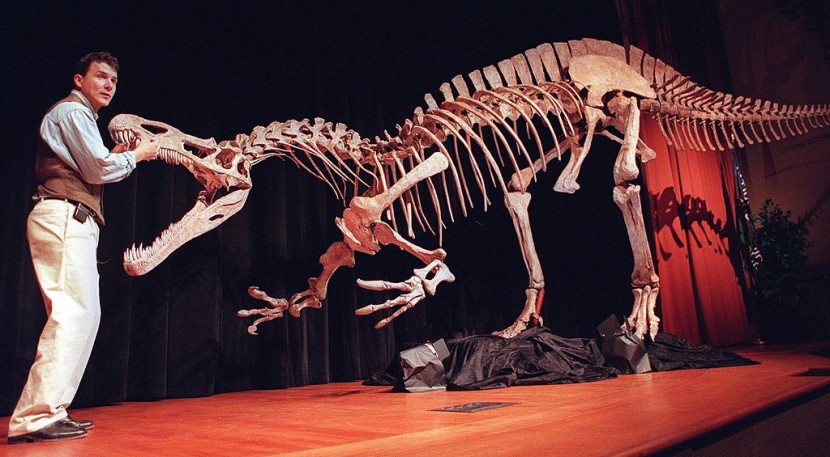
One of the enormous carnivorous dinosaurs found on the Isle of Wight living in the cretaceous period, meat-eaters were one of the second largest compared to giant plant-eaters.
The remains of these spined lizards (spinosaurids, spinosauridae), theropod dinosaurs that developed during the Jurassic era, are seen on other continents worldwide.
Largest Carnivore Found
Researchers from the University of Southampton discovered the fossil published in the journal PeerJ Life & Environment, reported SciTech Daily.
The ancient fossils were found on England's south coast, the Isle of Wight, where the bipedal and crocodile jawed spinosaurids.
Discovery continues to follow the University of Southampton team's past work on this group of dinosaurs, contributing to the finding of two new species in 2021.
The "White Rock spinosaurid," named after the geological layer in which it was discovered, was a massive predator, cited EurekAlert.
Ph.D. student Chris Barker, the study's lead author, discovered the dinosaur, about 33 feet long, making it the biggest killer dino in Europe yet, based on the limited material available.
Its large pelvic and tail vertebrae, amongst other pieces, were found in Compton Chine. The island's fossil record has dinos in other periods when they were alive but are not so known, noted Science Daily.
Spinosaurids Discovered
One of the largest carnivorous dinosaur specimens was stripped away from the Vectis Formation from the cretaceous period, which is poor in dinosaur fossils, according to Southampton University's Neil Gostling. It is likely the youngest spinosaur resource ever found in the UK.
The 125-million-year-old Vectis Formation documents the beginning of a time of increasing sea levels when the "White Rock spinosaurid" foraged in lagoonal waters and sandflats.
Darren Naish stated that only fragments are still in hand, and nothing is complete, as more fossils are needed for a better specimen.
The argument in a publication last year mentioned that these sailed dinosaurs were from and branched out in the western part of Europe, then spread out later.
Teeth marks were on the predator's bones, which, even after death, had become meat for supporting a range of scavengers and decomposers.
According to co-author Jeremy Lockwood, a Ph.D. student at the University of Portsmouth and Natural History Museum, it was Nick Chase, one of Britain's most skilled dinosaur hunters, who discovered these extraordinary fossils; however, he sadly died just before the COVID-19 epidemic.
He went on to say that he and his colleague discovered a lump of the pelvis with tunnels bored into it the size of an index finger. It was caused by scavenging beetle larvae that eat bones, leading to the idea that this colossal killer ended up as a meal for a swarm of gigantic insects.
Shortly, the scientists expect to start generating thin sections of the material to investigate the microscopic internal characteristics of the bones, which can disclose details about its growth rate and age.
Spinosaurids were one of the world's largest killer dinos in the Jurassic period that existed in water-borne areas but died out in time whose looks were unique and their lifestyle.
Finding one of the largest carnivorous dinosaur specie to exist during the cretaceous millions of years ago in the Isle of Wight opens endless discoveries in the future.
Related Article: Scientists Claim To Discover Fossils of Dinosaur Struck by Fatal Asteroid From 66 Million Years Ago








